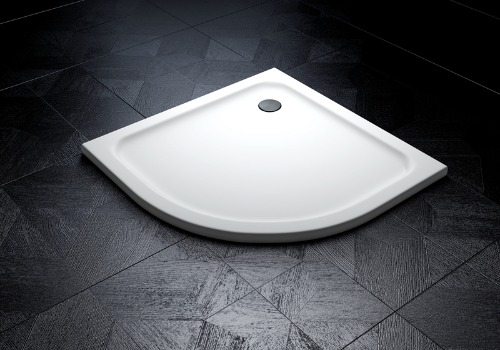When it comes to shower trays, the material's ability to handle weight and distribute load is crucial for both safety and longevity. ABS (Acrylonitrile Butadiene Styrene) shower trays have become increasingly popular, particularly when compared to traditional ceramic options. Understanding how these materials manage weight and load distribution can help homeowners make informed choices for their bathrooms.
Weight Distribution: ABS shower trays are designed to spread weight evenly across their surface. This is particularly important in areas where water is frequently present, as uneven load distribution can lead to cracking or sagging over time. The inherent flexibility of ABS allows it to absorb some impact without compromising its integrity, making it less likely to chip or break under pressure.
In contrast, ceramic shower trays, while highly durable, are rigid and can be more susceptible to cracking when subjected to sudden weight changes or heavy impacts. For example, if a heavy object is dropped onto a ceramic tray, the concentrated force can cause a crack, especially if the tray is not installed on a perfectly level surface. This is why proper installation is critical for ceramic trays.
Load-Bearing Capacity: Both ABS and ceramic trays have their strengths in terms of load-bearing capacity. ABS trays are engineered to support significant weight—often up to several hundred pounds—making them suitable for a variety of users. Their lightweight nature also contributes to easier handling and installation, reducing the risk of damage during setup.

Ceramic trays, while also capable of supporting substantial weight, require more careful consideration regarding installation. They often need a solid, well-prepared subfloor to ensure that they don’t crack under pressure. If the installation is not done correctly, the risk of localized pressure points increases, which can lead to breakage.
Thermal Properties: The thermal expansion of materials also plays a role in how they handle weight. ABS can expand and contract with temperature changes without losing its shape, whereas ceramic is more susceptible to thermal shock. This property of ABS can help maintain structural integrity under varying conditions, further enhancing its ability to handle weight and load over time.
Slip Resistance: Both materials can be treated for slip resistance, which is vital for safety in wet environments. However, the flexibility of ABS can allow for a more integrated anti-slip texture, ensuring that the weight of users does not compromise traction.




 English
English Deutsch
Deutsch
















